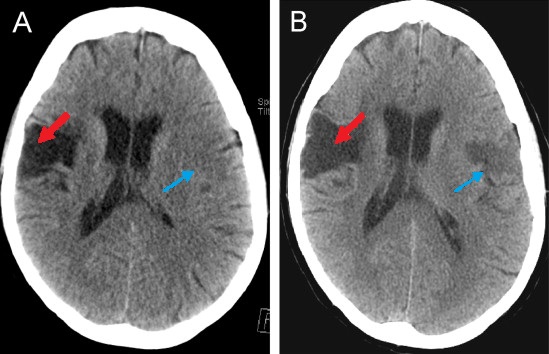Playlist
Show Playlist
Hide Playlist
Stroke: Introduction
-
Slides 01 Stroke Neuropathology I.pdf
-
Download Lecture Overview
00:01 Hello! Welcome to neuropathology. 00:04 I’d recommend that you have a formal grasp of neuroanatomy before embarking upon our lecture series together here in neuropathology. 00:11 We’ll begin our topic by looking at stroke, the stroke itself in general as we go through the various categories. 00:20 Strokes are a leading cause of death in the US, and the second most common cause of mortality worldwide. 00:26 Now, as we go through stroke, I’m going to give you some differentials, things that you want to keep in mind, as we’ve been doing throughout our entire course. 00:32 Here, you want to be able to differentiate between a stroke versus a transient ischemic attack. 00:39 And the reason for that is because the symptoms that the patient is going to present will be quite similar, won’t they? However, the time course is extremely different. 00:49 We’ll talk about that in a second. 00:51 Now, how did the stroke take place? How is there decrease in blood supply taking place to the brain in which all of a sudden you’ve lost your functioning? Well, if it is transient ischemic attack, well usually now, define it as being stroke-like symptoms but then, the symptoms go away and the patient comes back to being normal. 01:12 For example, a family, husband and wife, sitting in a living room, watching TV, and they’re watching their favorite show, maybe perhaps Full House. 01:22 And all of a sudden, the husband is having a hard time with vision, having a hard time speaking, slurred speech, and really is having a hard time getting out of his recliner. 01:36 The wife gets extremely concerned and so therefore, go to the doctor, and only to come to find out that in a very transient amount of time, maybe less than an hour, all the symptoms go away. 01:48 That’s transient ischemic attack. 01:51 The symptoms are extremely similar to stroke, aren’t they? But it goes away. 01:55 However, what you need to keep in mind is that this is a risk factor for a stroke or impending stroke about to happen. 02:03 And so therefore, you need to quite aggressive with your patient to make sure that if it is a microembolism that is being set off into the circulation of the brain then it has to be treated appropriately. 02:18 The pathophys, now 85% of strokes that do occur are of ischemic nature whereas 15% could be hemorrhagic. 02:28 And therefore, our time and your time should be focused upon ischemic and then, to make sure that we’re complete, I’d give you a proper definition of a hemorrhagic stroke.
About the Lecture
The lecture Stroke: Introduction by Carlo Raj, MD is from the course Stroke (Cerebrovascular Accident).
Included Quiz Questions
What is the most common type of stroke?
- Ischemic
- Amniotic fluid embolism
- Aneurysmal rupture
- Hemorrhage
- Pulmonary embolism
Customer reviews
4,0 of 5 stars
| 5 Stars |
|
2 |
| 4 Stars |
|
0 |
| 3 Stars |
|
0 |
| 2 Stars |
|
1 |
| 1 Star |
|
0 |
DR Carlo Raj is a great educator.very nice speech, clear concept of every topic.seems like I have a good private tutor and no need of books after watching his lecture.
I think this lecture lack of details and certain points needed as introduction
The lecture was concise and to the point. Dr Carlo's Style of lecturing always provides the right amount of emphasis, and his use of anecdotes help in visualising the patient. Any Iecture by Dr. Carlo Raj Is always highly recommended.




